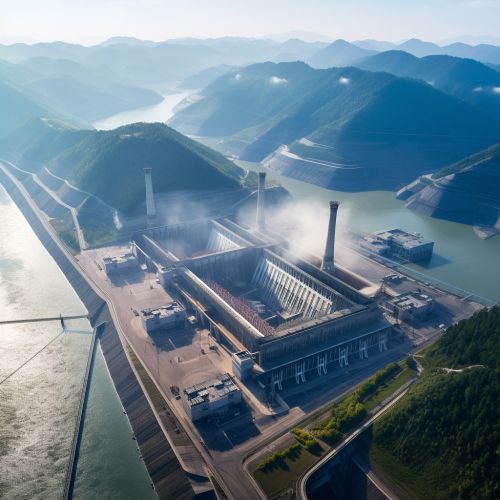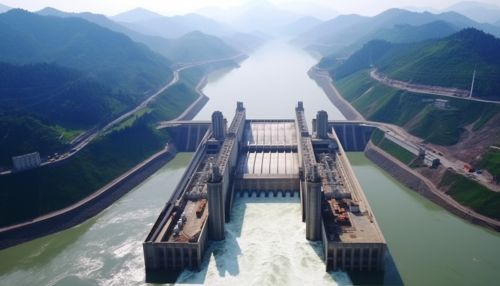Three Gorges Dam
Overview
The Three Gorges Dam is a hydroelectric gravity dam that spans the Yangtze River by the town of Sandouping, in Yiling District, Yichang, Hubei province, China. The Three Gorges Dam is the world's largest power station in terms of installed capacity (22,500 MW) and energy generation.


History
The idea of a dam built to harness the Yangtze River can be traced back to plans proposed by Sun Yat-sen in 1919. However, the project only officially started in December 1994. The dam was expected to be fully operational in 2009, but additional projects, such as the ship lift, delayed full operation until mid-2012. The ship lift was completed in 2015.
Design
The dam is a gravity dam, which means it relies on its weight to resist the force of the water. It is 2,335 meters long, 185 meters high, and the bottom width is 115 meters. The dam body was constructed with 27.2 million cubic meters of concrete.
Power generation and distribution
The dam's 32 main turbines have a capacity of 700 MW each, giving a total capacity of 22,400 MW. The electricity produced by the dam is distributed to nine provinces and two cities, including Shanghai.
Environmental impact
The environmental impact of the Three Gorges Dam is a subject of ongoing debate. The dam has caused significant changes in the ecosystem of the Yangtze River, and has been linked to a number of environmental problems, including land erosion, loss of biodiversity, and the displacement of millions of people.
